A TIMELINE OF EDUCATIONAL ALLIANCE’S HISTORY
1889
– The Educational Alliance established as a partnership between the Aguilar Free Library Society, Hebrew Free Loan Association, and the Young Men’s Hebrew Association.
– Committee of German Jewish Philanthropists: Isidor Straus, Judge Samuel Greenbaum, Myer S. Isaacs, Jacob H. Schiff, Morris Loeb, Edwin R. A. Seligman raised $125,000 for the building fund via a fair at American Institute Hall.
– The Aguilar Free Library Society moved across the street, and is now the Seward Park branch of the New York Public Library. The Young Men’s Hebrew Association moved uptown, and became the 92nd Street Y.
1891
– The Educational Alliance builds and opens its flagship building at 197 East Broadway, naming it the Hebrew Institute.
– Isaac Spectorsky appointed Superintendant of the Educational Alliance.
– Baron de Hirsch Fund established, Myer S. Isaacs, president, Jacob Schiff, vice-president.
1892
– Baron de Hirsch English classes for newly arrived immigrant children established at Hebrew Institute.
1893
– YMHA drops out of partnership arrangement with Hebrew Free School Association and Aguilar Free Library Society, and the Hebrew Institute renamed the Educational Alliance.
– Isidor Straus appointed first president of the new board; Isaac Spectorsky appointed Headworker (Executive Director).
1895
– The Educational Alliance Art School is informally founded by Henry McBride who goes on to become a prominent art critic for The New York Times.
– A successful fundraising fair raises $100,000 which enables the Alliance to pay the mortgage on the 197 E. Broadway building. View the Souvenir Book that was published for the Fair in Aid of the Educational Alliance and the Hebrew Technical Institute.
1897
– Rev. Hirsh Masliansky begins evening lectures in Yiddish.
– Building mortgage redeemed by Baroness Clara de Hirsch.
1898
– David Blaustein appointed Superintendent. Endowment Fund initiated by Jacob Schiff. Thomas Davidson begins Breadwinners’ College, which later becomes CUNY’s night school.
1899
– Educational Alliance incorporated.
1900
– Surprise Lake Camp for boys established with gift of land by Ferdinand Kuhn, James Frank, and Bernard M.L. Ernst.
– Morris Raphael Cohen takes over Breadwinners’ College.
1901
– Isidor Straus refuses Democratic nomination for Mayor of New York.
1902
– Legal Aid Bureau established with Yiddish-speaking lawyers and clerks; Desertion Bureau later added.
1903
– Children’s Educational Theater founded; Mark Twain attends a performance and subsequently joins the Board of Advisors of the Children’s Theater.
1904
– Compulsory Education and Child Labor laws enacted.
1906
– Sholom Aleichem and Mark Twain appear together at Educational Alliance.
1907
– Dr. Henry Fleischman appointed Administrator.
1908
– Commissioner of Police Bingham apologizes for his anti-Semitic-sounding remarks due to pressure by Louis Marshall of the Alliance board.
1910
– New York City establishes English classes for immigrants. Support of Baron de Hirsch Fund for Alliance classes ends.
1911
– The Educational Alliance’s Legal Aid Bureau is established, lending advice and support to up to 30,000 callers each year. It is eventually absorbed into the Legal Aid Society.
1912
– Isidor and Ida Straus drown on the Titanic; leave bequest of $101,000.
– A Protective Bureau and a Probation Bureau established which deal with pre-delinquents, delinquents and vice conditions on the Lower East Side.
1913
– Council of Jewish Communal Institutions formed; Lee Kohns (Alliance delegate), president.
1915
– Twenty-fifth anniversary celebration.
– Edalia, vacation home for girls, opened in Rumson, N.J.
– Alumni Association formed group of former club members.
1917
– Federation for Support of Jewish Philanthropic Agencies of New York organized. The Educational Alliance becomes a charter member agency and receives annual budgetary allowance. Support of Baron de Hirsch Fund ended.
– Educational Alliance Art School reorganized by Russian-born artist Abbo Ostrowsky. Chaim Gross, Leonard Baskin, Moses and Isaac Soyer, Jo Davidson, Elias Newman, and Concetta Scaraviglione among the artists who studied at the Art School.
– Surprise Lake Camp becomes an independent Federation unit.
1922
– Camp Salomon for women and children joined Surprise Lake Camp in offering memorable summer vacations away from the crush of the Lower East Side. In 1958, it becomes a camp for older adults.
1924
– Restrictive immigration laws end growth of East Side Jewish population.
1926
– Camp Salomon founded with family memorial gift.
1928
– Educational Alliance absorbs East Side Day Nursery with Federation subsidy.
1931
– First speech improvement clinic in New York opens at Alliance.
Circa 1935
– Educational Alliance becomes the neighborhood headquarters of the Works Progress Administration (WPA). The Alliance offers classes with WPA staff.
1937
– Neighborhood Service Department opened.
1938
– Samuel S. Fishzohn appointed Director.
1940
– Retrospective Exhibition hailed at Associated American Artists Galleries, commemorating twenty-five years of Art School.
1945
– Mordecai Kessler appointed Director.
1948
– Cohen Survey of the Educational Alliance assesses changes on the Lower East Side and leads to increased professionalization of services. Charles Ansell appointed Acting Director.
1949
– A. Harold Murray appointed Director.
– Rebecca Lepkoff initiates photo darkroom classes for teenagers at The Art School.
1951
– Alliance begins Day Care Center Program for young children of low-income mothers, subsidized by the New York City Department of Social Services. This is the first government contract pursued and obtained by The Educational Alliance and begins a strong and continuing commitment to partner with government agencies to meet the needs of families and individuals in our community.
– Stuyvesant Neighborhood House merged with Educational Alliance. Mental Health Consultation Unit established.
1954
– Programs begun for mentally impaired children and adults. Dr. Simon Slavin appointed Director. Radio broadcasts from Alliance auditorium.
1955
– Tercentenary of Jews in America celebrated on Lower East Side. Alexander Dobkin takes over Art School.
1956
– Operation Street Corner initiated. Between Two Bridges study published by New York University. Alliance helps establish Lower East Side Neighborhood Association and Two Bridges Neighborhood Council. Purchase of Israel and Leah Cummings campsite. Alumni Hall of Fame established.
1960
– Louis Berkowitz appointed Director.
1961
– Seventieth Anniversary Celebration. Alliance sponsors Professional Institute entitled, “Group Work and the New Frontier.”
1962
– Joint project with Hillside Hospital on social rehabilitation of discharged psychiatric patients is initiated.
– Operation Street Corner incorporated in government-funded Mobilization for Youth Program.
1963
– Retrospective Art Exhibit at American Federation of Arts Galleries.
– Edgies Basketeers appear on Johnny Carson’s “Tonight Show.”
1964
– Addressing the changing demographics of the Lower East Side, Project Contact opened in a storefront and aims to combat street delinquency and drug abuse right at its source. This model of direct, proactive service would become one of the core strengths of The Educational Alliance.
– Stay in School project initiated.
– Groundbreaking ceremonies for David Podell House and Israel and Leah Cummings Gymnasium.
– Mental Health Institute with Hillside Hospital held at Alliance.
1965
– Chosen by the federal government to run one of the first pilot programs of Head Start. Neighborhood Youth Corps, LaGuardia Houses project, Strauss League program with Hillside Hospital initiated.
– Alliance opens Rutgers Community Center.
1966
– David L. Podell House opens, providing housing for the rapidly aging population of the neighborhood. The building is unique, as it is one of the first to house a community center in the facility. This community center becomes the Whittaker Senior Center in 1980, offering kosher lunches, educational and recreational activities, and trips to older adults.
– Seventy-fifth Anniversary dinner at Waldorf-Astoria. Governor Rockefeller attends unveiling of commemorative plaque at David Sarnoff Building
1967
– Tenement Houses Project with Adelphi School of Social Work begins.
1968
– Pride Site I, The Educational Alliance’s first residential drug treatment program serving men only, opens. This venture is another example of The Educational Alliance’s ability to recognize problems in the neighborhoods it serves and to respond with meaningful programs and services.
1969
– Dedication of Israel and Leah Cummings Gymnasium. Community Organization Task Force launched. East Broadway School for Emotionally Disturbed Children established.
– The Art School begins to host the Alliance of Figurative Artists. This artists discussion group continued until 1980 and attracted 100 artists each week including Phillip Pearlstein, Alice Neel, Rachstraw Downes, Lois Dodd, and other leading figurative artists.
1970
– Project Contact expanded.
– Blanchard and Vigilante report, Response to Change: The Educational Alliance and Its Future.
– Dedication of renowned Educational Alliance building, now named the David Sarnoff Building (attended by Mayor John Lindsay).
– Camp Cummings, a residential camp for developmentally disabled children and young adults, is opened.
1971
– Dedication of Camp Leah.
1972
– Project Contact receives Federal grant to add residential, day treatment, and outpatient services.
1973
– Neighborhood Service Center for the Jewish Poor established.
1975
– Alliance joins United Jewish Council of the Lower East Side.
– Project Contact initiates major Alcohol Treatment Program.
1976
– First Annual Jewish Spring Festival. Chaim Gross commemorates fifty years of association with Art School.
– ALESS (Association of Lower East Side Settlements) Home Care program, Senior Companions program, Jewish Public School Youth program initiated.
1978
– Project Contact Synergy Program, a retail sales training program, begins.
1979
– The Educational Alliance opens Educational Alliance West (Lower West Side Program) with an extensive parenting program that eventually moves to its 14th Street Y.
1980
– Robert Meltzer appointed Director. Wallace S. Whittaker Senior Center established.
1982
– Respite House and Crime Prevention for the Elderly. Head Start Project Linkage study and conference. Lifeline program, an emergency alarm response system for physically frail and homebound elderly, initiated.
1983
– Dedication of Senior Citizens Building for the Handicapped at Cummings Campgrounds.
– Day Care Center award presented by Mayor Edward Koch.
– CompatiMates, part of Educational Alliance West, initiated.
1984
– Our House residence for mentally impaired young adults is opened.
– Gifted Young Artists, a new program, introduced in the Art School for thirteen- to twenty-year old students.
1985
– Legal Services Clinic established by Benjamin N. Cardozo School of Law.
1986
– The management of the SRO (Single Room Occupancy) on 12th Street is taken over by The Educational Alliance, providing transitional housing and social services for older, homeless adults, as well as a community center with a range of activities.
– New York State Cocaine Hotline established at Project Contact.
– Project O.R.E., an outreach program established for elderly Jewish homeless, initiated.
1987
– Project ORE (Project Outreach to the Elderly), an outreach program for homeless or isolated, often mentally ill, older Jewish adults is fully established. More than a soup kitchen, ORE provides a place for people to reconnect with mainstream society and to reclaim their individual dignity.
1988
– Alliance West conducts extension program at Penn South Co-op for senior adults. 255 East Broadway purchased for new respite facility for the elderly.
1989
– Centennial programs begin to celebrate first 100 years of the Alliance. Dedication of Educational Alliance Corner at the corner of Jefferson Street and East Broadway in Lower Manhattan.
– Educational Alliance West opens early childhood/parenting center in downtown Brooklyn on Montague Street.
1991
– At the request of UJA-Federation of New York, The Educational Alliance takes over the Emmanuel Midtown YM-YWHA and renovates the facility 3 years later.
– The Jewish Museum presents a tribute to the Educational Alliance Art School — an exhibit called “Painting A Place In America, Jewish Artists in New York 1900-1945.” The exhibition catalogue is edited by Norman Kleeblatt and Susan Chevlowe.
1994
– The Sara K. Abrams residence for homeless mentally-impaired adults is established.
– The Emmanuel Midtown YM-YWHA is rededicated as the Sol Goldman YM-YWHA. Today it is known as The 14th Street Y of The Educational Alliance.
1995
– Educational Alliance is one of only 20 providers selected to serve as a pilot for Early Head Start, federally funded child education, continuing and expanding a commitment to Head Start since the mid-60’s.
– Pride Site II residential drug treatment facility opens, offering beds for both men and women, as well as extensive counseling services. Along with Pride Site I, these facilities move people from addiction to recovery through close monitoring, community connection, and a commitment to restoring each individual’s self-worth.
1996
– One of the first organizations contracted by New York State to administer a NORC (Naturally Occurring Retirement Community) Center, The Alliance opens its first NORC for residents of Co-op Village, a development across from its flagship building on East Broadway. It eventually expands services for that site, and then takes over a NORC Center for the Village View Apartments on First Avenue in 2006.
– Stanton House residential home for mentally impaired, chemically-dependent adults is established.
2000
– The Harry and Jeanette Weinberg Residence for the Elderly opens on 11th Street and Avenue A, after three years of construction. This building offers 50 units of assisted living for adults sixty and over.
2006
– After intensive self-study, The Educational Alliance releases a new Strategic Plan, charting a course for the next century of growth and community building. The centerpiece of the plan is an affirmation of the organization’s Jewish history and recognition of the diversity of the neighborhood it serves, resulting in a commitment to the best Jewish traditions of community service for all residents of downtown Manhattan.
2007
– The Educational Alliance expands its Early Head Start program on the Lower East Side, adding a home-based component. Research indicates that Early Head Start programs which combine center-based (classroom) and home-based services are more effective.
– In response to identified need and interest among the hundreds of teens in the Edgies Teen Center, The Educational Alliance opens its College Prep program. To date, every senior has been accepted to college.
2008
– Groundbreaking for 2931 Avenue D — a new community center created to consolidate counseling and drug treatment programs, provide additional beds for residential treatment, and free, open space for other Educational Alliance sites in the East Village.
– LABA, the National Laboratory for New Jewish Culture at the 14th Street Y, launches. LABA seeks to transform the Jewish cultural landscape by placing artists at the center of communal institutions as leaders, innovators, role models, and sources of inspiration. The program includes Artists-in-Residence and the Girls Theater Project.
2009
– In response to a request from the City Department of Education, The Educational Alliance opens a Universal Pre-Kindergarten program in Greenwich Village.
– Renovation of the 14th Street Y, including the fitness center, locker rooms, and lobby, is completed.
2012
– Educational Alliance launches College Access and Success Program (CAASP), two-generation education model for low-income families with children in Early Head Start and Head Start.
2013
– Annie E. Casey Foundation selects Educational Alliance as one of four demonstration sites for two-generation education programs that promote family economic security.
– Alan van Capelle appointed CEO of the Educational Alliance.
2014
– Educational Alliance raises $55 million for the gut renovation of its flagship building at 197 East Broadway, which reopens as the Manny Cantor Center.
2017
– The Center for Recovery and Wellness opens, the first of its kind community center in New York State dedicated to health and rehabilitation services.
2023
– Richard Baum appointed CEO of the Educational Alliance.




